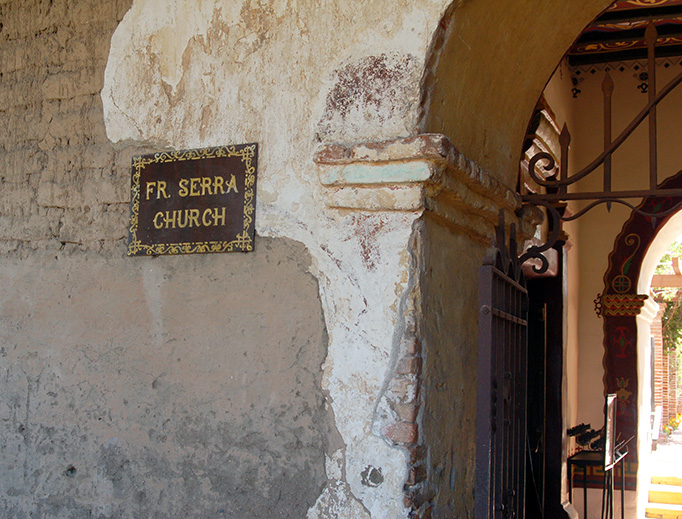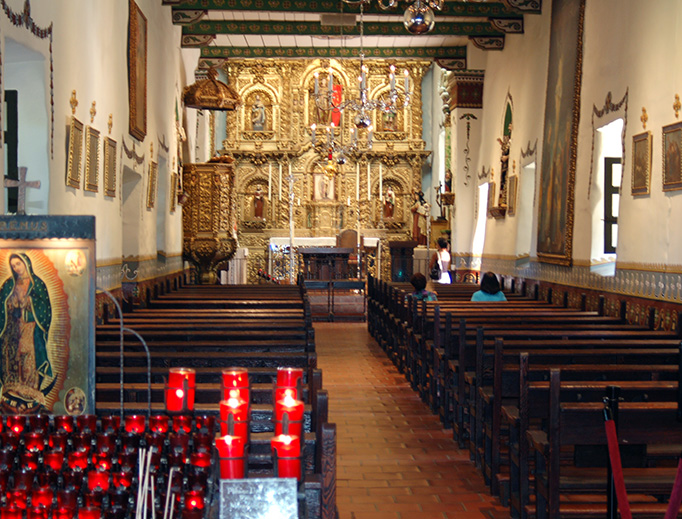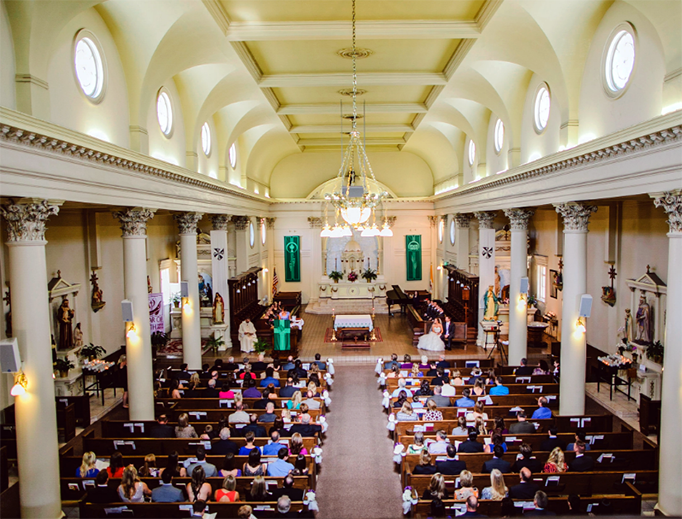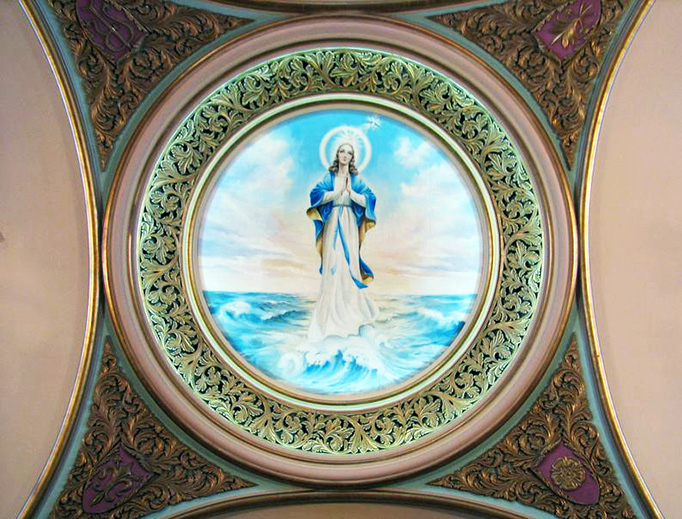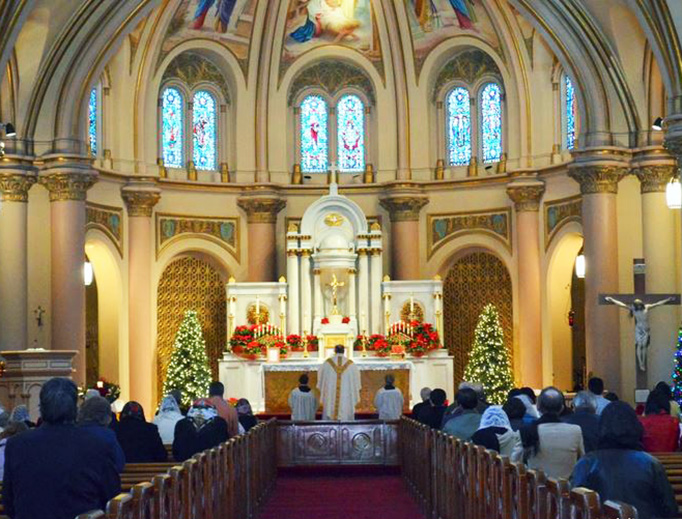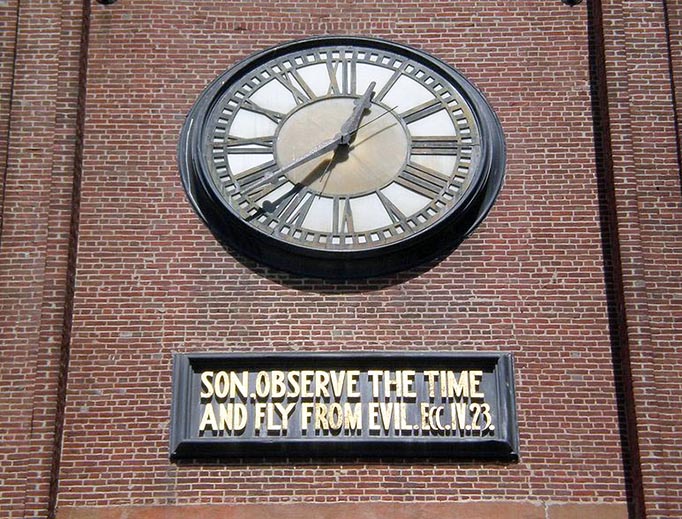California Has Churches Dating Back to the 1770s
Mission San Juan Capistrano’s Serra Chapel was built in 1776. Fr. Junipero Serra himself celebrated Mass there.

The first Catholic churches in California were at the Spanish missions, built by Franciscan friars. Many of these historic churches still exist today. The California Gold Rush of the mid-19th century brought in large numbers of Catholics of other ethnicities. Beautiful 19th century Catholic churches were erected to meet their spiritual needs; many of these churches still exist today as well.
The following are a list of some beautiful Catholic churches dating back to the 18th and 19th century—just a few of the many that could have been selected—well worth a visit on your next trip to California.
1770s
The Carmel Mission was the second of California’s 21 missions. It was founded by St. Junipero Serra in 1770, and relocated to its current site in 1771. Construction of its buildings began in 1771; most of the principal buildings were completed by 1793. It has been restored to look much like it did in 1793. It has the unique distinction of being the burial site for Fr. Serra; he died in 1784 and was interred beneath the church floor. Also interred there are Fr. Serra’s close friends and fellow Spanish Franciscans, Fathers Juan Crespi and Fermin Lasuen.
Pope John XXIII designated the mission a minor basilica in 1961. It is also a National Historic Landmark. It is a parish of the Diocese of Monterey. It is located in Carmel, the “La Jolla of the north,” a quaint community on the beach with many art galleries, shops and restaurants. Carmel has many famous residents; actor Clint Eastwood, for example, served a term as mayor in the 1980s.
Mission San Juan Capistrano’s Serra Chapel is another of California’s oldest churches, built shortly after the mission’s founding in 1776. Fr. Junipero Serra himself celebrated Mass there. The church was used for storage in the late 19th century, but was restored to its original use in the 1920’s. The church art and architecture have undergone an extensive renovation and are beautiful. Some of the artwork, such as the Stations of the Cross, are older than the mission itself.
Although most of the parish’s liturgical/sacramental life occurs at the much newer and bigger Basilica church—check out its magnificent Golden Retablo—Serra Chapel is still very much in use as a house of worship. It also boasts a side chapel shrine, St. Peregrine’s Chapel, which draws many cancer patients on pilgrimage each year. Perhaps the most beautiful and best maintained of the mission churches, it is well worth a visit.
1800s
Mission Santa Inés was founded by Franciscan priests in 1804 to instruct the local Chumash Indians in the Catholic faith. The original church collapsed in an earthquake in 1812; a second church was built in 1817. The Mexican government seized the mission and its lands in 1833, the mission was later returned to the church.
The quaint Danish town of Solvang was built up around the mission a century ago. The Capuchin Franciscan Friars from Ireland took over care of the mission in 1924. Today, it is a parish of the Archdiocese of Los Angeles. Visitors can enjoy historic artwork, documents, vestments and other artifacts.
Old Cathedral of Saint Mary of the Immaculate Conception is a historic church in Chinatown, San Francisco (near Nob Hill and the Financial District). It was founded in 1854 and was the Archdiocese of San Francisco’s first cathedral; today, it is a parish church. The original church was gutted by fires after the 1906 earthquake; its renovation was completed in 1909. Subsequent additions were made to the church. During World War II, it welcomed many servicemen en route to wartime assignments in the Pacific.
The church houses beautiful art, including many traditional paintings, stained glass windows and statues. On the exterior, under its bell tower clock, are the words from Ecclesiasticus 4:23: “Son, observe the time and fly from evil”: an admonition to the men of the 19th century Gold Rush era who visited houses of prostitution nearby. It’s a California Historical Landmark, and is popular for weddings and tourists. There is a Paulist Center and Bookstore where you can buy religious items.
St. Vincent’s Church in Vallejo is a historic parish, and is beautiful inside and out. It was founded in 1855, and is located on the northeast end of the San Francisco Bay, north of Berkeley, and is part of the Diocese of Sacramento. The current Gothic style church was completed in 1868, and was dedicated by Archbishop Joseph Alemany, the first archbishop of San Francisco. It was designated a city landmark in 1983.
Star of the Sea Church in San Francisco was established as a mission in 1887 and as a parish in 1894. It is located in the Inner Richmond neighborhood, between the Presidio and Golden Gate Park (don’t be surprised if it’s foggy!) It’s a beautiful old San Francisco church in the traditional style; there’s a magnificent image of the Blessed Mother overhead near the altar area. With the encouragement of Archbishop Salvatore Cordileone, the parish has become a home for those who prefer Mass in the Extraordinary Form; the archbishop has come there himself to celebrate Mass in the EF.
St. Paul’s is a beautiful, historic church in the Noe Valley region of San Francisco. The parish was founded in the late 1800s; its English Gothic church was built 1897-1911 (it took 14 years because it was built as funds were raised). It has great architecture and art; prominent twin towers, beautiful stained glass windows and impressive woodwork. And, ask any parishioner about the church and they’ll tell you it was the principle location for the 1992 move Sister Act. The church was nearly closed in the 1990s due to concerns that it might collapse in an earthquake, but parishioners persuaded the Archdiocese to keep it open. Vast amounts of funds had to be raised, including through the sale of some parish property, to do an expensive seismic retrofit of the building.
St. Dominic’s in Benicia is a beautiful old church near the northern end of San Francisco Bay. It was established by the Dominican Fathers in 1854; the current church was built in 1890. It was once the site where Dominicans in the novitiate studied for the priesthood, but the novitiate was re-located to St. Albert’s Priory in Oakland, where it remains today. You’ll enjoy a traditional interior, with nice art; one of the striking features of this church’s interior is the row of white columns along either side. It is still operated by the Dominican Fathers of the Western Province.
Church of the Nativity in Menlo Park is a pretty, historic little church built in the New England style. It is part of the Archdiocese of San Francisco. It began as a mission church in 1872, and became a parish in 1877. The initial church was enlarged and modified and officially dedicated in 1888. Other elements were added through the years, including an impressive rose stained glass window in 1900. Fortunately, the 1906 San Francisco did little damage to the church (while wrecking the rectory!). The church is built in the cruciform style and made of redwood painted white. Its many impressive features include beautiful stained glass windows and hand-carved side altars; it is surrounded by attractive landscaping, including palm and oak trees. It was placed on the National Register of Historical Places in 1981. It is an outstanding place for prayer, and offers Eucharistic adoration 24/7.
